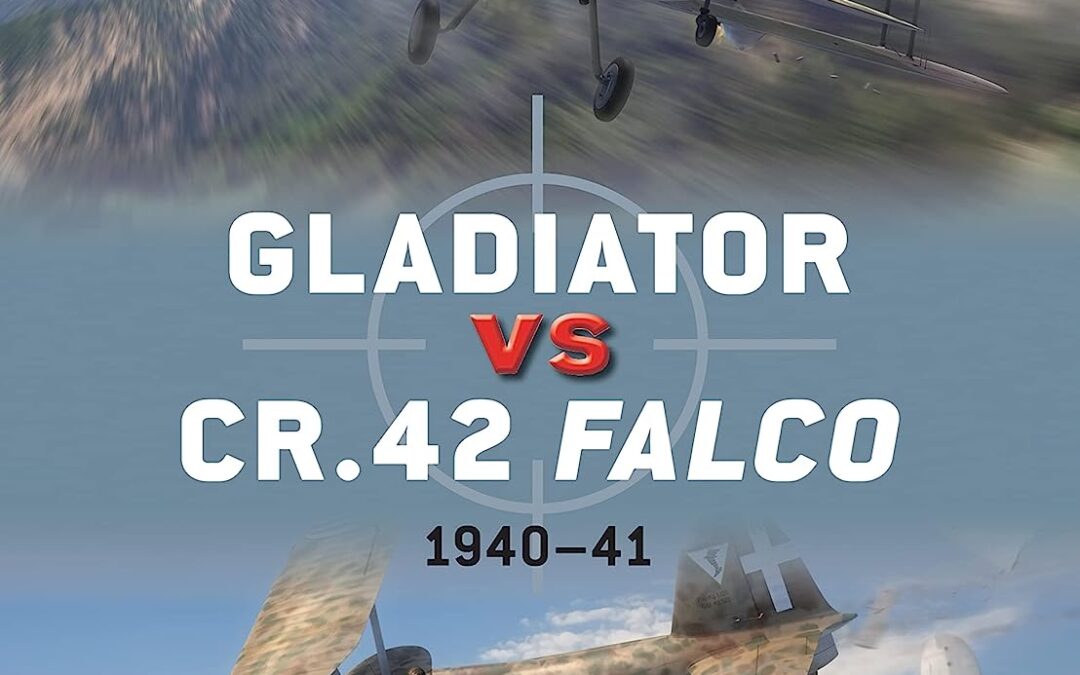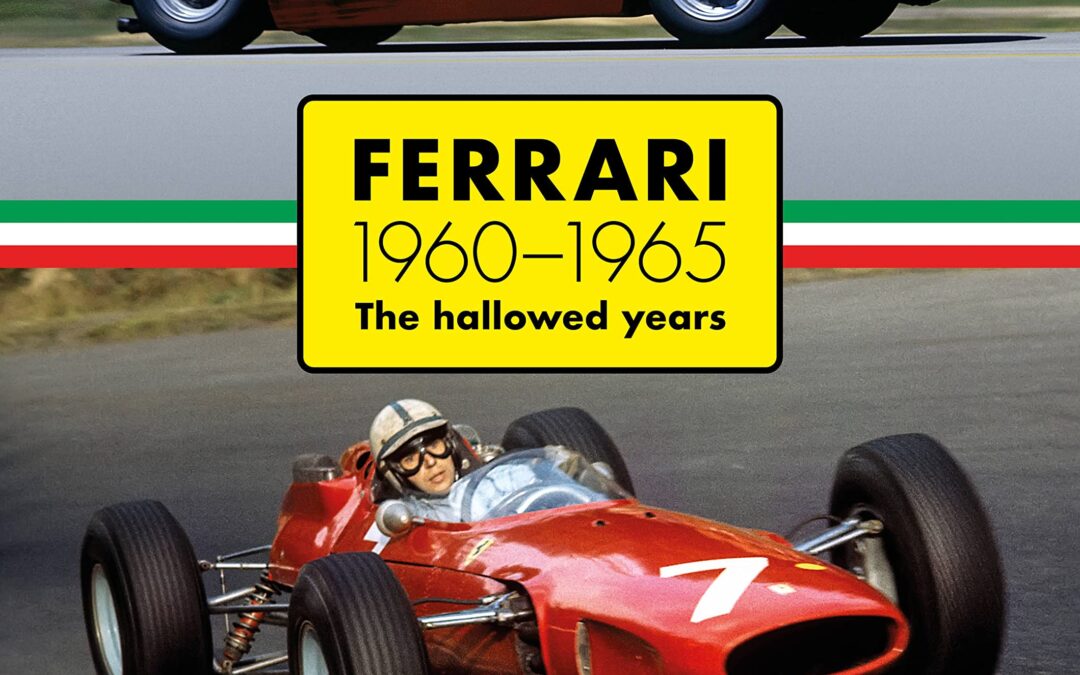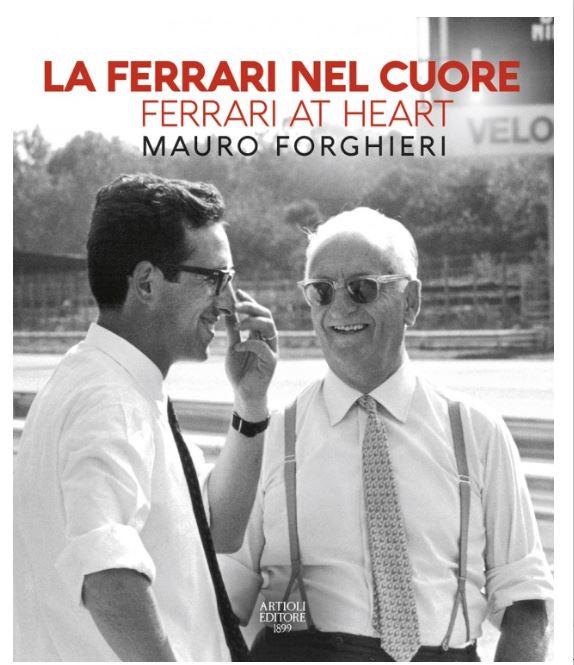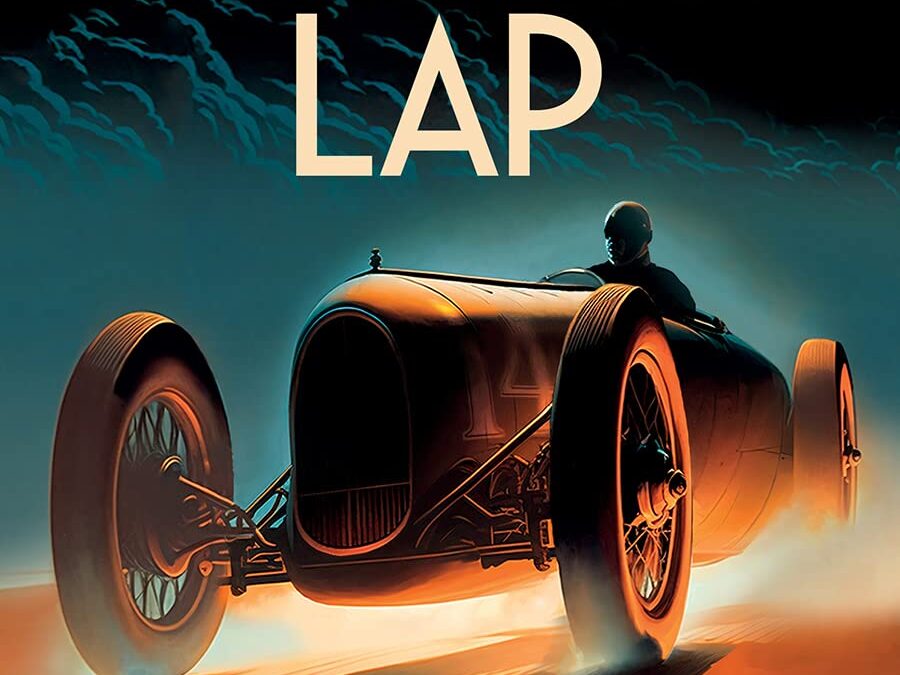
The Last Lap is a gripping inquest into the fast life and mysterious death of racing driver Pete Kreis, infamously killed in practice at the celebrated 1934 Indianapolis 500. In a compelling narrative that reads like a novel, author William Walker’s lifelong obsession with Kreis’s mysterious demise has created a rich story line that takes readers back to the glamorous and dangerous times that marked the beginning of automotive competition.
Much more than a motor racing story, The Last Lap is the tale of a boy who rises from the obscurity of back country Tennessee roads to compete in the world’s fastest and most celebrated races, and the parallel tragic collapse of a rich and powerful Southern family.
Piloting a front-drive race car in practice, Kreis crashed into the wall of Turn One, rode along the top of the retaining wall for seventy-five feet, and careened down an embankment at the south end of the oval. As the car smashed into a tree in the backyard of a nearby house, both men were killed. The next year, an impromptu “coroner’s jury” of Indy drivers and Speedway experts held an intense review of the accident, and they concluded that Kreis’s demise was “the strangest death in all racing history.”
Lifelong racing fan and acclaimed historical author, Walker’s (Betrayal at Little Gibraltar) search to solve the mystery surrounding Kreis’s death has spanned three-quarters of a century and too many miles to count. Walker’s fascination with the mysterious crash is driven by more than a love of racing–Kreis is a distant cousin. The dynamic, nonfiction narrative is the result of a decades long quest in search of the truth—the real story of Pete Kreis, his colorful racing career, and his tragic death.

Pre-order now for early 2023 delivery
Can-Am! The words are still magic to a generation of road racing fans to whom the Canadian-American Challenge Cup series represents the pinnacle of the sport they love. And who is to argue? Taking over from the USRRC (United States Road Racing Championship), as the feature sports car circuit in North America, from 1966 through 1974 the world’s best drivers and the world’s best racing teams put together cars that followed the rule of the Can-Am series: no rules! Anything went, as long as it had two seats and enclosed wheels. These “rules” set the stage for years of ground-and-pulse-pounding cars powered by bigger and bigger engines and daredevil drivers competing in front of motorsport’s biggest crowds. Years later the names still carry weight: drivers like Dennis Hulme, Bruce McLaren, Dan Gurney, Jackie Stewart, Mark Donohue, George Follmer. And what cars: McLaren, Lola, Porsche, Ferrari, and Shadow. But who was behind those awesome machines and drivers? Who could keep them going when the torque shook loose engine bolts? Who could spend an entire low-paid off season in small, cold and drafty race shops looking for an extra edge in performance and reliability? Who could toil in uncomplaining anonymity behind the scenes while the cars and their drivers basked in the considerable glory that went with Can-Am racing? The men portrayed in One Last Turn.
One Last Turn presents the first look at the men (and in those days they were all men, young men) who made it all work. The mechanics who towed the mighty cars on pick-up trucks and worked on them between races and between heats in the blazing sun and pouring rain on muddy grassy fields, who drove 90 miles per hour on the era’s two lane roads, towing a 2000 pound race car to make the next race’s starting grid.
Illustrated with many never before seen photos of the cars and people who made Can-Am great, this is the book that fans of the series have been waiting for.
The men who kept the machines on the track during the Can-Am years
Hilarious and poignant never-before told stories behind the scenes during the Can-Am years.
- Hard cover with dust jacket
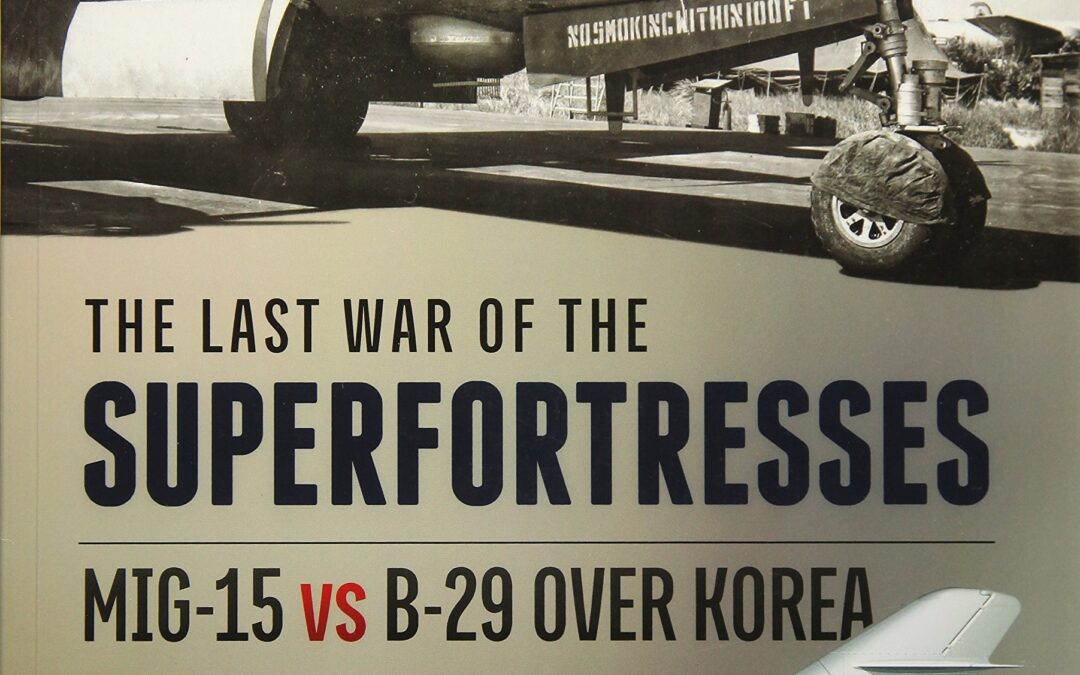
This work is an attempt by the authors to give as full and detailed a history as possible of the confrontation between Soviet fighters and the principal strike force of the United States Far East Air Force – the B-29 ‘Superfortress’ bombers during the course of the Korean War between 1950-1953. Military documents, which the authors have studied over many years of work in the Central Archive of the Ministry of Defense of the Russian Federation in Podolsk – as well as published Western sources – form the basis of this book.
The recollections of pilots who served in the 64th Fighter Air Corps, and who participated personally in the events described, are also widely used. Almost all the battles that took place between Soviet fighters and the ‘Superfortresses’ are analyzed in detail; the authors have, on the basis of a comparison of Soviet archive documents and data from published Western sources, attempted to clarify the actual losses on both sides in these battles. Particular attention has been paid to key events in the history of the confrontation between the MiG-15 and B-29 such as the air battles of April and October 1951, which had a significant impact on the course of the Korean War and influenced the development of military aviation in both the USSR and the USA. Following the encounters on the approaches to the bridges at Andung of 12 April 1951 Strategic Air Command decided against using ‘Superfortresses’ close to the area around the MiG bases. The outcome of a series of air battles from 22 to 27 October 1951 – the most famous of which was the battle between MiGs and B-29s in the area close to the airfield at Namsi on 23 October (‘Black Tuesday’) was a ban by Strategic Air Command on daylight operations by ‘Superfortresses’ in the Soviet fighter’s zone of operation. These battles also influenced the technical policy of the United States Air Force in relation to strategic bombers.
Extensive losses in combat with the MiGs served as one of the most influential arguments for curtailing the piston engine B-36 and B-50 bomber programs and boosting development of one of the most famous aircraft in the history of global aviation – the B-52 ‘Stratofortress’. Night operations, to which the B-29s and subsequently Soviet fighters were transferred, are also analyzed in detail in this book. These nocturnal operations culminated in the air battles of December 1952 and January 1953. After sustaining losses in these battles that were comparable to those of October 1951 the ‘Superfortresses’ would subsequently only carry out nocturnal sorties to the MiGs’ zone of operation in poor weather conditions. In this work, the authors have analyzed the advantages and the disadvantages of the La-11 and the MiG-15bis – the principal fighters of the 64th Fighter Air Corps – from the point of view of their ability to intercept the B-29s. Attention has been paid to the tactics of the opposing sides, and to how these changed over the course of the war. The technical aspects of the confrontation between Soviet fighters and ‘Superfortresses’ have been examined, and the reasons behind the different periods of success or failure in terms of performance in combat have been identified.
A great deal of statistical material has been provided in this book, which characterizes combat operations carried out by the B-29s and the fighters of the 64th Fighter Air Corps, both within the text itself and in the form of easy-to-use tables. The book is illustrated with photographs obtained both from the personal archives of veterans of the 64th Fighter Air Corps; from the Central Archive of the Ministry of Defense of the Russian Federation; and US National Archives. Color profiles showing camouflage & markings are also included.

“Almost 30 years have passed since the publication of the first book about the famous Tipo 60 and 61 Birdcage Maserati race cars. A new, more comprehensive description of their competition history has been long overdue and Dalton Watson Fine Books are delighted to announce the publication of Maserati Tipo 60 and 61; The Magnificent Front-engined Birdcages. Much additional information has come to light in the last two decades which has enabled the authors, Willem Oosthoek and Michel Bollée, to include numerous updates, corrections, and further elaboration regarding the history of this innovative design.
In 1959, while Ferrari and Aston Martin battled for supremacy in the World Sports Car Championship, Maserati returned to the racing scene with an amazing sports racer, revolutionary in concept: the 2-liter Tipo 60. The car received the nickname ‘Birdcage’ because of the design of its chassis and was immediately successful. The 3-liter version, the Tipo 61, appeared soon after in response to demand from the many private owners and drivers determined to make the Ferraris eat dust. Twenty-two front-engined Birdcage Maseratis campaigned in a vast number of races during the nine-year period between 1959 and 1967. Light and fast, by 1967 they had accumulated almost 170 victories. The new book is a complete history of the car during those years and, for the first time, includes the many Birdcage appearances in European events.
Part 1 of the book covers each individual year, divided in segments on World Championship, North American and European events. Part 2 portrays the individual race history of each chassis number, as well as the owner sequence over the years. At the end of the book each driver is linked to the specific chassis number[s] of the Birdcages in which he competed.
The authors have had the benefit of inpupload ut by many personalities involved in the early history of the Birdcage Maseratis, both drivers and car owners. The book contains first-hand anecdotes, the result of interviews with Bill Krause [the 1960 Times Grand Prix victor, who also wrote the Introduction], Chuck Daigh, Jim Jeffords and many more. In addition, making the book come alive visually are the great images taken by professional photographers such as Flip Schulke and Bob Tronolone, and photographs from the personal collections of the owners and drivers, many of them previously unpublished. “
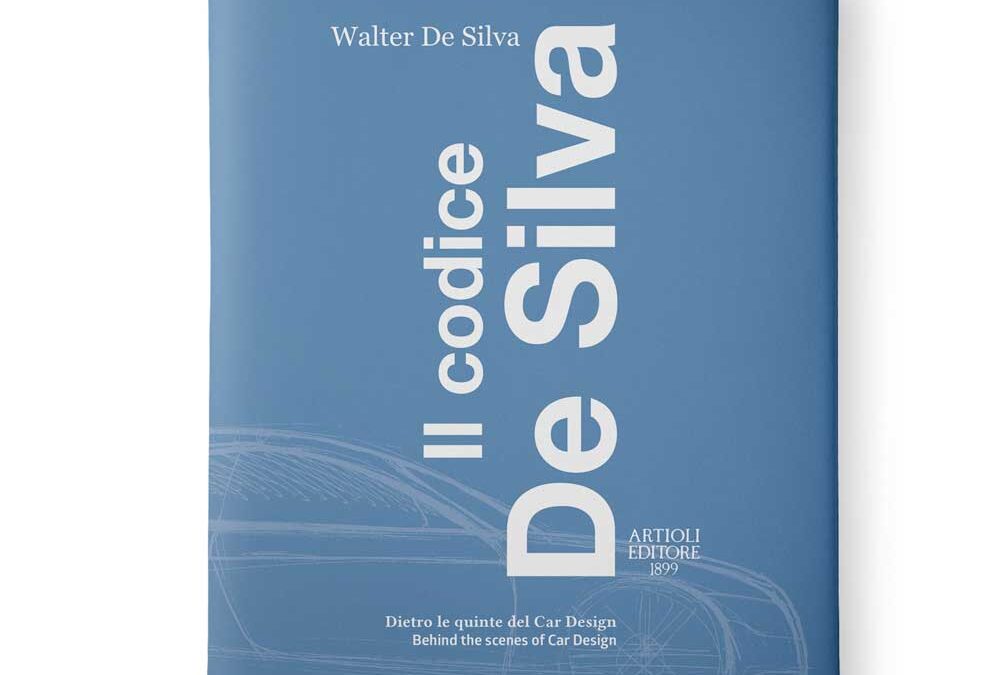
How is the style of a car created?
How does one get to the top of the “Design” division of a major car manufacturer, a sector that is continually under “friendly fire” from the entire management staff, including presidents and CEOs, because style lends itself to diverse interpretations?
These questions are answered by Walter De Silva, a designer of indisputable fame, with top-level experience in an impressive number of brands: Fiat, Alfa Romeo, Audi, Seat, Volkswagen, Skoda, Lamborghini, Bentley and Bugatti, as well as direct contacts in Ducati and Porsche.
It’s a long story, told by De Silva himself in a brilliant and spontaneous way, and it gives the reader the impression that the author has been able to transfer his expertise in Design to paper, including feelings, pathos, moods and discontent, which characterized the genesis of the many cars that he designed.
A sensation reinforced by the publication of numerous original drawings by the author alongside the text.
De Silva’s story proceeds swiftly thanks to it being split up into episodes, many of which see as protagonists the author together with famous names of the world motoring elite, such as engineers Ghidella and Cantarella (protagonists of the complicated period experienced by the Fiat Group in the final years of the last century), Avvocato Agnelli and his brother Umberto, Sergio Marchionne and the leaders of the Volkswagen Group, where a brilliant and absolute ‘monarch’ – Professor Ferdinand Piëch, the nephew of Ferdinand Porsche – was in charge.
He was the man who “absolutely” wanted De Silva in the Group.
Of course, all the famous models of the Milanese designer, such as the Alfa Romeo Proteo and Nuvola prototypes and the 156 and 147 saloon cars, take centre stage.
The list of models studied for the VW Group is a long one; it includes the third generation Audi A6, on which the famous grille called “single frame” made its debut, with a courageous design embracing the entire front and which since then (2004) has characterized the entire production of the Ingolstadt company.
These are memories of successful times but also of struggles to assert ideas, in a true “automotive novel”, which has Design – but not only design – as its protagonist.
- 258 pages
- Colour and b/w images
- Format: cm 20×26
- Cover: hardcover with dust jacket
Language: Italian – English
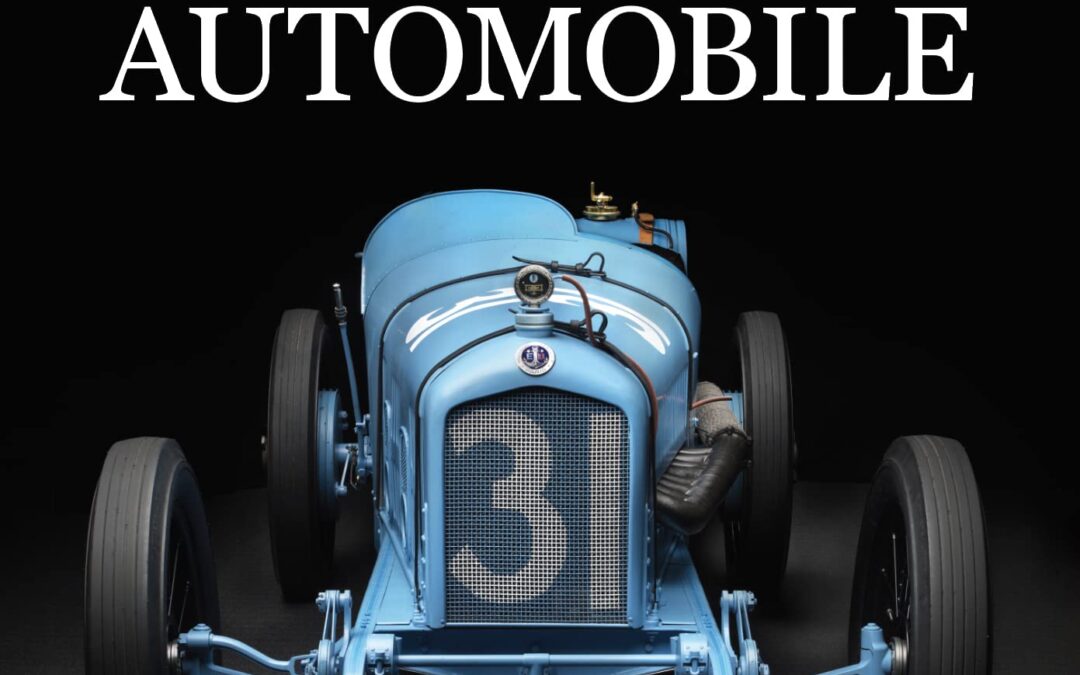
In the last one hundred years, cars have shaped our lives. Other everyday cultural artifacts, such as watches, telephones, musical instruments, and televisions, have certainly had influence, but the car is by far the most significant. Now, change is coming for the car, as it is for so many other industrial artifacts. Once, cars were distinct machines. Now, they are evolving into multifunctional digital devices. New fuels, new modes of travel, and new technologies are disrupting the traditional role of the much-loved family car.
What is to become of this material legacy? Should we really let go of it? Without memory, personal and shared, we lose our way, our individuality, and our culture. This proposition is at the heart of The Archaeological Automobile.
Miles C. Collier’s landmark approach uses an “archaeological mindset” to interpret the automobile as a cultural artifact in six themes:
The Development of the Automobile describes how the car emerged from a pressing human need for mobility, tracing our relationship with horses, our invention of the bicycle, and how we turned our backs on both as daily transport for the allure of the car.
The Rise of the Collectible Automobile asks how and why ratty relics decaying in recycling yards can become valuable and treasured collectibles. It reveals the effect of cultural influences on our perception of cars and on the dynamics of the collector car market.
The Archaeological Mindset picks up a wrench, gets into the workshop, and tracks the restoration of a 1919 Ballot Indy car using hands-on experience and background research while deploying the “archaeological imagination.” The archaeological clues are in the detail.
Collecting and the Archaeological Automobile deals with the characteristics of collecting. Why do we accumulate “stuff”? Is it greed? Is it passion? Is it a desire for legacy? And what makes a “good” collection? Is it bling? Is it style? Is it material worth? The answer lies in connoisseurship.
Restoring the Archaeological Automobile debates the merits of diverse restoration strategies and the reasoning behind them, including the tricky question of how to repaint the tilt-front nose of a 1964 Alfa Romeo GTZ racing car and still preserve the evidence of forty years of accumulated sandblasting and chipping.
The Archaeological Automobile of the Future is a call to action. Cars as we know them are customarily trashed, government regulations encourage indifference, and the skills and knowledge associated with fixing them are slowly vanishing as we lose older generations of experienced craftsmen. How can we preserve humanity’s treasure trove of automotive knowledge for generations to come?
Filled with engaging stories and practical examples, this is a handbook of the most thoughtful practices, not just for automobile owners and the historical car industry, but for collectors, professionals, and users of all kinds of industrial era artifacts.
The Archaeological Automobile combines scholarship, pertinent anecdotes, style, and experience to provide a stimulating account of why we should all be archaeologists now.
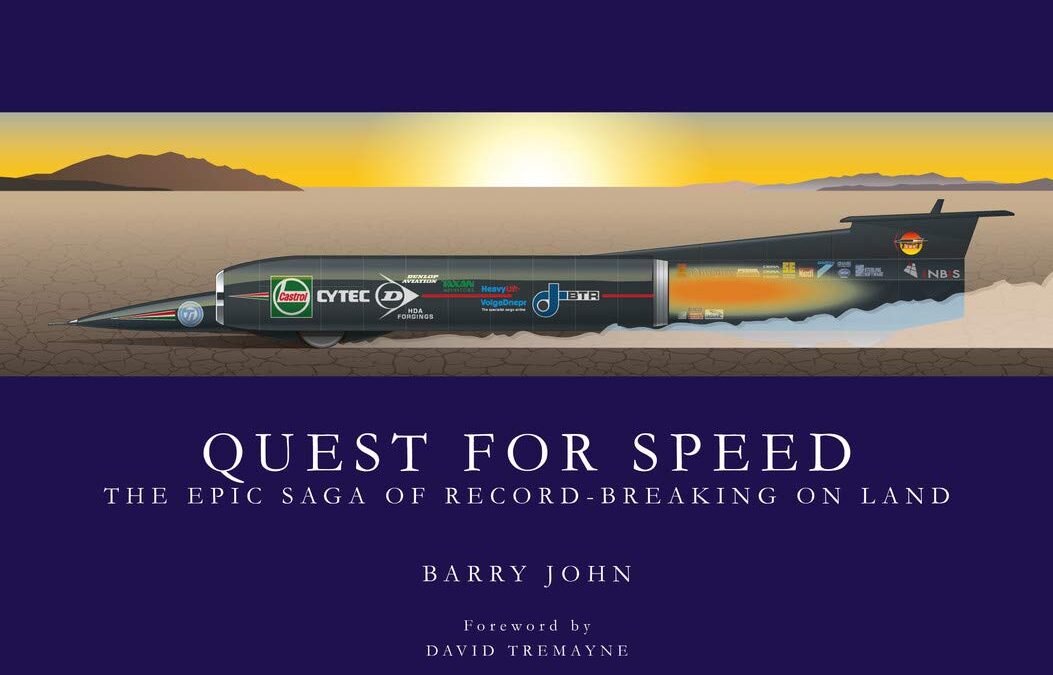
As Land Speed Record historian David Tremayne states in his foreword, “Quest for Speed is a wonderful book that celebrates passion.”
In a remarkable first book, Barry John has celebrated his life-long passion for the quest for speed by writing, illustrating and designing this fascinating history of record-breaking on land. Along with his informed and detailed text, his beautiful artwork shows all significant record-breakers in their immense variety, each illustrated in profile and accompanied by a cameo portrait of its driver. From the start of it all in the late 19th century to today’s challengers seeking to reach “the last frontier,” 1,000mph, the story that unfolds will enthrall not only enthusiasts for the subject but anyone appreciative of innovative engineering and brave human endeavour.

As Land Speed Record historian David Tremayne states in his foreword, “Quest for Speed is a wonderful book that celebrates passion.”
In a remarkable first book, Barry John has celebrated his life-long passion for the quest for speed by writing, illustrating and designing this fascinating history of record-breaking on land. Along with his informed and detailed text, his beautiful artwork shows all significant record-breakers in their immense variety, each illustrated in profile and accompanied by a cameo portrait of its driver. From the start of it all in the late 19th century to today’s challengers seeking to reach “the last frontier,” 1,000mph, the story that unfolds will enthrall not only enthusiasts for the subject but anyone appreciative of innovative engineering and brave human endeavour.
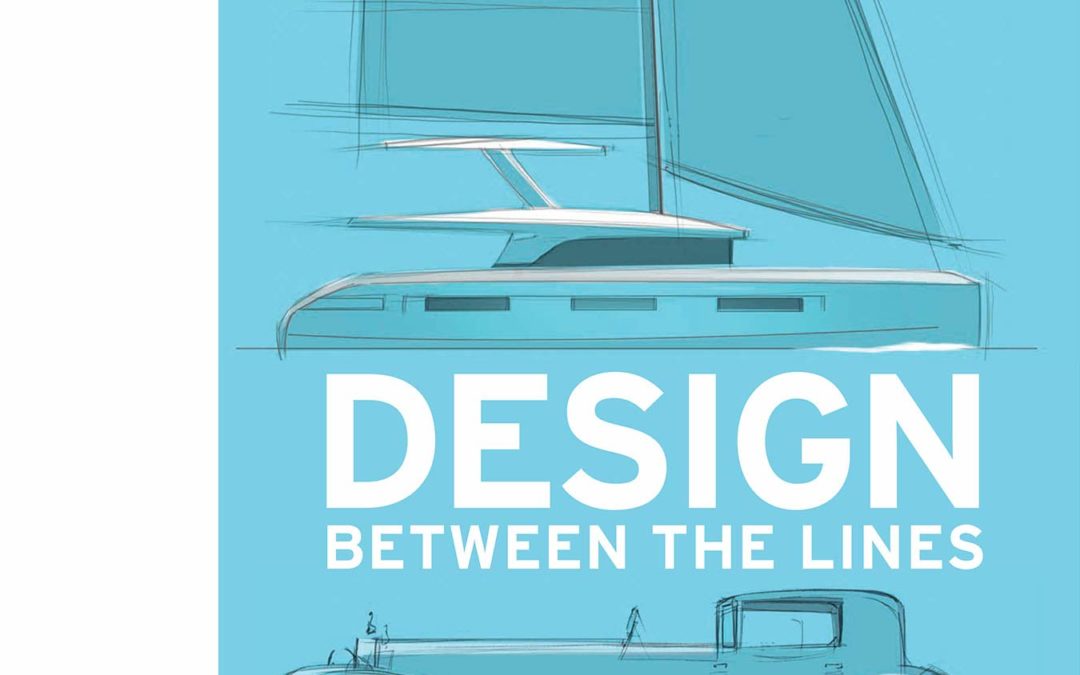
The car industry and the way in which cars are created have changed beyond all recognition over the last half-century. Automotive styling was once the grudging afterthought when the engineers had finished their work. Now, following a short flirtation with exotic Italian design houses, it has evolved into sophisticated design carried out by multitalented in-house teams honing carefully crafted brand identities.
One of the visionary designers at the forefront of that revolution has been Patrick le Quément. Most widely acclaimed for his 22 years in charge of Renault Design, resulting in such standout models as the Twingo, Scénic and Avantime, le Quément has enjoyed a 50-year career that has also taken in Simca, Ford and Volkswagen-Audi. In his foreword to the book, Stephen Bayley calls le Quément ‘perhaps the very most original designer working in the conservative car business at the turn of the millennium’. Some 60 million cars across the world now bear the unmistakable stamp of le Quément.
Design: Between the Lines is not a straightforward autobiography; rather, le Quément charts his journey through five decades of thoughts, actions, failures and successes. He offers fascinating commentaries on design and the creative process, and on some of the extraordinary automotive brands that make up our shared cultural heritage. As Bayley notes, for le Quément, design is ‘as much a matter of thinking as a matter of drawing’. On a broader, more philosophical level, le Quément also shares his views about life in general and that remarkable contraption called ‘the automobile’, which has so influenced the lives of millions of people the world over from the late 1800s to the present day.
Presented as a series of 50 brief essays or ‘perspectives’, le Quément’s thoughtful and astute observations from the street, from the design studio and from his seat in the boardroom give the reader a penetrating and often amusing insight into the high-level workings of a global industry, its triumphs and tragedies, and the foibles of the decision-makers responsible for running it. A lively complementary text by the automotive journalist Stéphane Geffray accompanies each of le Quément’s perspectives, and illustrations are provided by the automobile designer Gernot Bracht. Design: Between the Lines will appeal to all motoring fans and enthusiasts of good design. As Chris Bangle, the former Director of BMW Design, remarks: ‘Few car designers have had a career so filled with innovative successes that they have inspired a whole industry; fewer still have the skills to share it. Engaging and revealing, Patrick relates his personal experience and deep knowledge of car design in a very enjoyable manner.’
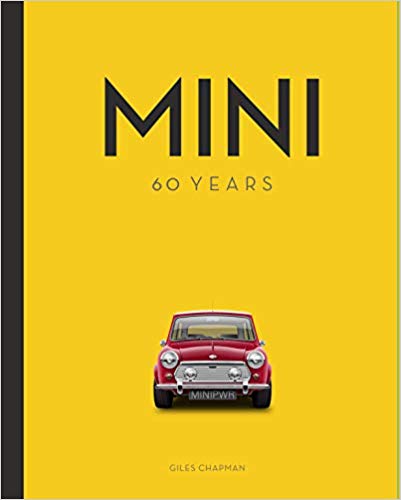
Mini celebrates 60 amazing years of this iconic car, from its revolutionary introduction to the popularity of its new-generation models.
The first two-door Mini, introduced in 1959 and built until 2000, revolutionized automotive design with its innovative front-wheel-drive layout that made the car appear bigger on the inside than the outside. In 1999, the Mini was voted the second most influential car of the 20th century, behind the Ford Model T.
Designed for British Motor Corporation (BMC) by Sir Alec Issigonis and manufactured in England, Australia, Spain, Belgium, Chile, Italy, Portugal, South Africa, Uruguay, Venezuela, and Yugoslavia, the Mini was as successful in competition as it was on the street, winning the Monte Carlo Rally four times from 1964 through 1967.
Originally built by BMC, the Mini’s later parent company, Rover, was acquired by BMW in 1994. In 2000, BMW sold most of the Rover Group but retained the Mini brand. The last and 5,387,862nd original Mini rolled off the production line in October, 2000. In July 2001, BMW launched production of the new-generation of Mini which was soon joined by Countryman, Clubman, convertible, Cooper Works, and numerous special editions. Nearly 20 years later, the new Minis remain as popular as the original from 1959.
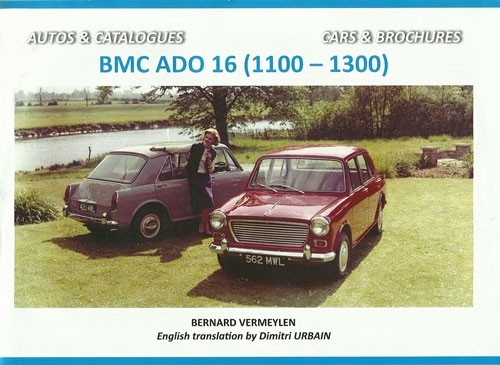
The BMC ADO 16 (Austin Drawing Office 16) Morris 1100 car was revealed to the international motoring press on 15th August 1962, a larger and worthy companion to the BMC Mini which had been launched in 1959 to worldwide acclaim. Both designs were the work of Alec Issigonis and featured transverse engines with the gearbox in the sump, driving the front wheels, groundbreaking technology at the time which has been universally adopted since, though not the gearbox in the sump. A further revolution was the suspension; the Mini had progressive springing by rubber cones, the work of rubber technician Dr. Alex Moulton which, together with rack-and-pinion steering, was responsible for the Mini’s incredible road-holding. The larger Morris/Austin 1100 series cars were fitted with a developed version named “Hydrolastic”. Suspension was still by Dr. Moulton’s rubber cones, but associated with a chamber filled with water and antifreeze and incorporating damper valves, which was connected to similar rear units via pipes and was a form of self-levelling. A unique solution to the problems associated with large differences between laden and unladen weights in small family cars.
Bernard Vermeylen’s fascinating book, with English and French text, studies the design, technologies and development of Issigonis’s and BMC’s hugely-successful ADO 16 design, which lasted for over 10 years and evolved from the Austin/Morris 1100 to the 1300 cars, which in turn were built in a bewildering variety of badge-engineered makes; Vanden Plas Princess, MG, Riley Kestrel and Wolseley, as well as being licence-built in Italy (Innocenti), Spain (Authi), Australia (Nomad), New Zealand and South Africa (Apache). BMC themselves produced GT versions, Traveller and Countryman estate cars and a variety of different spec. models for various markets.
Most of the illustrations in this book take the form of images from factory brochures and press photos, detailing the many changes BMC made to the ADO 16 in the decade it was in production. Specifications of different models, paint colours and sales prices are all listed in Bernard Vermeylen’s book, it is as comprehensive a survey as is possible and particularly interesting for the details published on the many export and licence-built variants of BMC’s 1100/1300 cars.

This rakish fighter became known as the ‘mount of aces’, being the type on which the most successful fighter pilots of Britain and her Empire went to war throughout the last 18 months of World War 1. It was the Spitfire of the Western Front: delivering greater speed, range, firepower and all-round performance than the vast majority of its opposition. Often working in partnership with the more pugnacious Sopwith Camel, the S.E.5 and S.E.5a ensured that no enemy aircraft was safe even a long way behind their own lines as the Royal Flying Corps gradually won air superiority over the trenches.
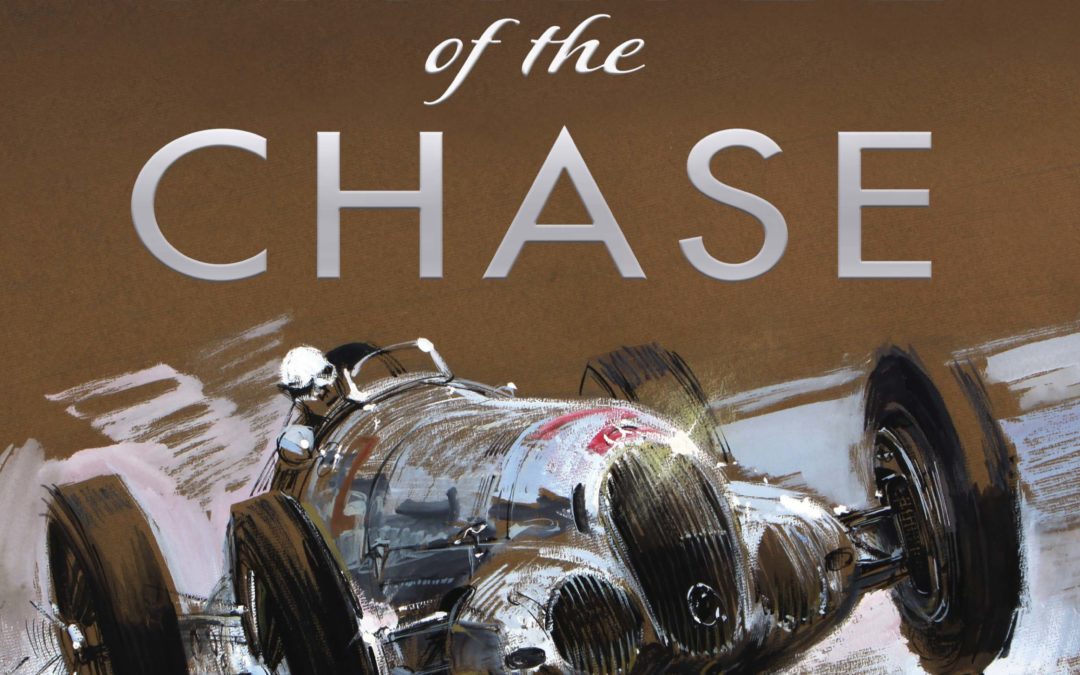
Dalton Watson’s latest autobiography is the life and times of that larger-than-life character, Colin Crabbe, who found himself at the forefront of motor racing, firstly as a privateer racing Ford GT40s in 1966 then driving in the 1967 World Championship. He cut his teeth during 1969 as an owner and team manager in Formula One having found he was too large to fit an F1. Colin reckoned he had to be one of the last great gentleman amateurs at the cutting edge of motor sport. In 1968 he located in East Germany one of the pre-war Silver Arrows, a Mercedes W125 Grand Prix car. Colin raced the Mercedes and numerous other historic racing cars until a bad crash put an end to this in 1988. When not motor racing, he travelled around the globe looking for forgotten treasures in the motoring world. What once was a hobby and passion had become a serious business, albeit one that involved Colin invariably getting himself into various scrapes, tangles and unusual adventures.
- 1,500 copies
- Page Size: 230mm x 280mm
- Page Count: 448 pages
- Photographs: 550 images

Great Cars Series #5
This is the story of a uniquely special example of the Maserati 250F, the breed of car that epitomizes the 2-1/2-litre front-engine Formula 1 era of 1954-60 and took part in the first and last races of that classic period. The finest flowering of the 250F came in 1957 with the lightweight version in which Juan Manuel Fangio won the last of his five World Championship titles. Three lightweights were built and the one featured in this book, chassis 2528, was driven to victory by Fangio in the Monaco Grand Prix and by Jean Behra in three non-championship Grands Prix at Pau, Modena and Casablanca. The fascinating story of 2528, from its construction to the present day, is accompanied by 400 photographs, many of them never previously published. This book presents the life of a truly Great Car – the most original and widely raced of all Maserati 250Fs.
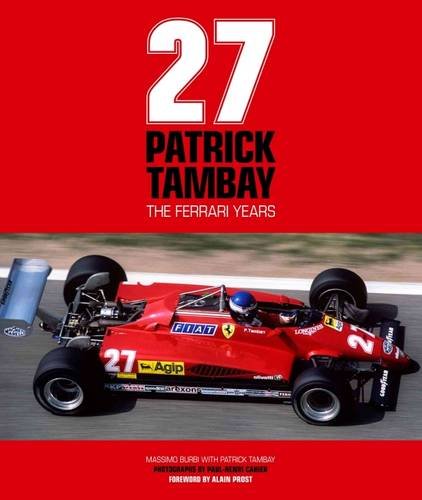
This is the emotional story of Patrick Tambay’s rollercoaster Formula 1 ride with Ferrari. The saga began in 1982 with the tragedy of his friend and fellow driver Gilles Villeneuve’s death in the Belgian Grand Prix at Zolder and then unfolded as Tambay took Villeneuve’s place in car number 27, achieved race victories and, as the 1983 season developed, fought for the World Championship. Told in 27 chapters, this is a tale not only of Formula 1 in those colourful years but also a rare and revealing account of life inside Maranello in the twilight of the Enzo Ferrari era, supported by magnificent photographs by Paul-Henri Cahier.
– British GP, 1982: at Brands Hatch Tambay’s second race for Ferrari brings his first-ever podium finish, in his 51st Formula 1 start.
– German GP, 1982: after team-mate Didier Pironi’s career-ending crash during practice at Hockenheim, Tambay lifts his sombre Ferrari team with his first Formula 1 win.
– Italian GP, 1982: in front of Ferrari’s emotional home crowd at Monza, Tambay finishes second, with the great Mario Andretti, his team-mate for this one race, behind him in third place.
– San Marino GP, 1983: Tambay delivers exactly what the Scuderia’s fans desire – victory at Imola for the number 27 Ferrari 12 months after Gilles’s last race.
– South African GP, 1983: Tambay’s farewell race for Ferrari sees him on pole position (his sixth front-row start in seven races), but a mechanical failure denies him any chance of a final victory.
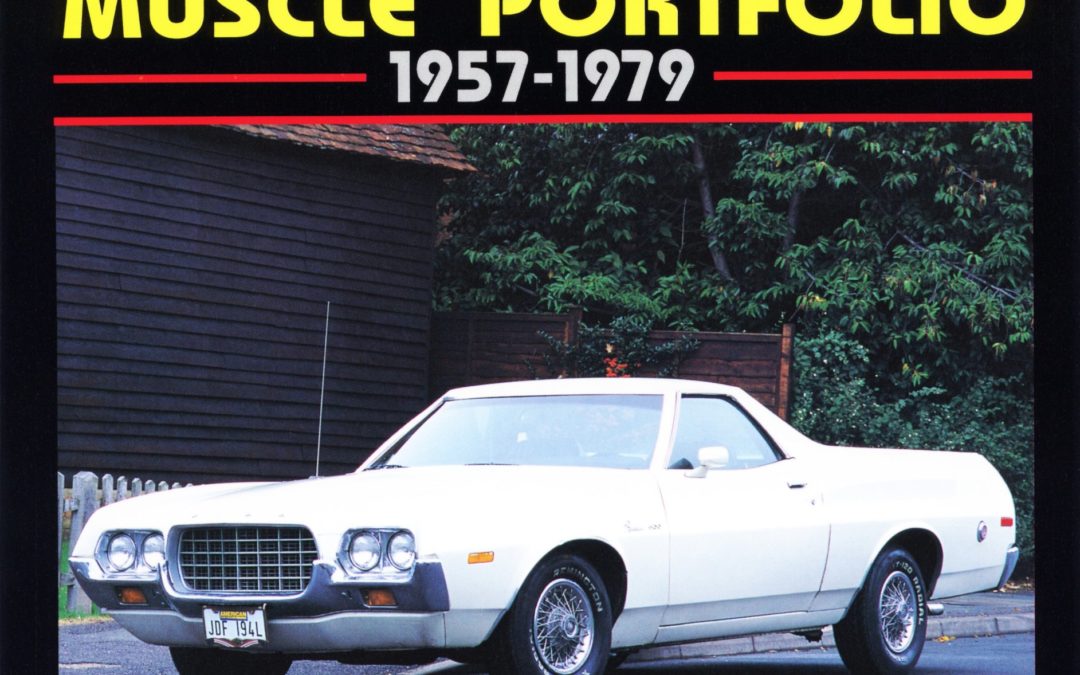
This coupe-utility was introduced in 1957 in the sales battle with Chevrolet. The line switched sizes and platforms several times over the years. Originally based on the Custom sedans disappointing sales meant a switch to the Falcon after which sales rose. Over the next decade the Ranchero became more sporty taking on elements of the Torino and, from 1977, the front-end of the LTD II. Small pick-ups became fashionable and so the last Ranchero appeared in 1979. This is a book of contemporary road and comparison tests, technical and specification data, owner’s views, engine swapping, model introductions and history. Models covered include: Custom Ranchero, 292, 352, Falcon Ranchero 289, 6 & V8, Fairlane Ranchero 390, 221, Torino Ranchero 302, 351, Hacienda, XA, 500A/T, 4100A/T, GT, LTD II Ranchero.
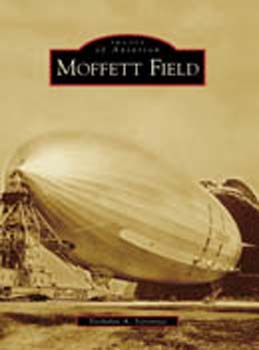
The looming immensity of Moffett Field’s Hangar One, built in 1933 to house the world’s largest—and last—rigid-frame dirigible, is an unforgettable South Bay landmark. The lighter-than-air Macon cost 2.5 million Depression-era dollars and could hold 100 men and five Sparrowhawk biplanes, yet its silvery bulk hovered silently or sailed up to 80 miles an hour. It drew crowds as it darkened the skies around Mountain View until it broke up in a storm two years later. Other blimp squadrons, equipped with carrier pigeons instead of biplanes, succeeded the Macon. Moffett Field has at various times served the navy, army, and the air force. Now home to the world’s largest wind tunnel, the NASA Ames Research Center also supports research that blazes the frontiers of supercomputing, robotics, space sciences, astrobiology, and nanotechnology.
